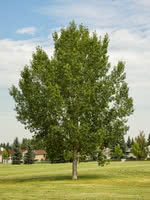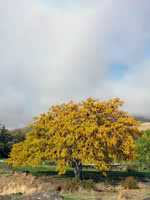Mon-Fri 9am - 5pm Mountain time
Northwest Poplar vs Thornless Honeylocust
Populus x jackii Northwest
Gleditsia triacanthos inermis
Northwest Poplar is a large and fast-growing tree. Due to its wide spread, this tree makes a great shade or shelterbelt tree. Northwest Poplar tolerates partial shade, drought, and most types of soil. This poplar produces no fuzz.
Northwest Poplar continues to be popular as a shelterbelt species due to the great cost savings that come from the wide spread of the branches. It is a staff favorite because of the wonderful shade it provides all summer long.
Thornless Honey Locust makes an excellent shade tree with its lacy foliage and dappled shade. The leaves are honey-yellow, light and airy, providing interesting color and texture to your landscape. This variety is thornless, and the seeds and pods provide food for wildlife such as deer and squirrels.
The Thornless Honey Locust is tolerant of drought, various soil conditions, and even road salt.
Northwest Poplar Quick Facts
Thornless Honeylocust Quick Facts
In row spacing: 2.4 - 3 m (8 - 10 ft)

